Innovative Industrial Solutions for Improving the Technical/Economic Competitiveness of Concentrated Solar Power
Abstract
1. Introduction
2. Analysis of Concentrated Solar Power Technology and Future Perspectives
2.1. Line-Focusing CSP Systems
2.1.1. Linear Parabolic Systems
2.1.2. Linear Fresnel reflectors
2.2. Point-Focusing CSP Systems
2.2.1. Dish-Stirling Systems
2.2.2. Solar Tower Systems
2.3. Key Takeaways of the CSP Technologies Analyzed
3. Innovative Industrial Solutions to Improve Technical-Economic Performance of CSP Technology
3.1. Hybridization of the MAGALDI’s CSP Technology
3.2. MAGALDI Solid Particles Fluidized Bed Solar Receiver
- higher maximum temperatures achieved in the receiver (>700 °C);
- different types of HTF (innovation pathways with solid particles, molten salts, or gas receivers);
- a strong push toward the integration of TES with significant capacity;
- development of more efficient cycles, such as the supercritical CO2 Brayton conversion cycle, in comparison to the conventional Rankine steam cycle for electricity generation;
- higher cycle efficiencies than current ones (>50%);
- higher annual solar-electric efficiency (25–30%).
- ensuring high operational temperature, excellent thermal storage capacities, high diffusivity, and high heat transfer coefficients;
- optimal properties, thanks to which it is possible to transfer the captured solar energy in the first instance within the granular solid and, subsequently, to the HTF participating in the thermodynamic cycle.
- improvement of overall efficiency;
- hybridization of the solar primary energy source with other RES;
- a new innovative concept with integrated beam-down.
- (1)
- A beam-down reflector that is integrated into the receiver with a relevant optimized heliostat field.
- (2)
- A fluidized bed receiver that receives the concentrated solar power and releases “hot” particles to the downstream silo; the fluidized bed receiver is fed with “cold” particles by means of mechanical conveyors driven by Variable Frequency Drive (VFD) motors to adjust the material feeding rate according to the actual solar irradiance; the fluidized bed receiver, coupled with adjustable inlet material flow rate, provides sufficiently long residence time and control for releasing hot particles at uniform temperature.
- (3)
- A hot silo to store solid particles at high temperatures, which were released by the fluidized bed receiver; the hot silo is equipped with a solid particles extractor to feed the downstream heat exchanger with particles at the desired rate, according to the needed power load.
- (4)
- A heat exchanger located outside the receiver to allow the counter current heat exchange from the solid particles to the selected HTF (such as steam or sCO2). The solid particle mass flow rate from the hot tank to the counter-current heat exchanger can be adjusted through a dedicated feeder extractor. Moreover, the mass flow rate from the fluidized bed receiver to the hot tank is also adjustable.
- (5)
- A cold silo to store the particles exiting the heat exchanger at “low” temperatures.
- (6)
- Computational Fluid Dynamics (CFD) modeling for evaluating the solid particle mass flow fields and residence time in the fluidized bed receiver, along with Finite Element Method (FEM) modeling of the integrated beam-down radiant cavity with efficiency evaluations.
- Design and realization of new wireless, “self-powered” heliostats to evaluate the potential of electrical wiring elimination in the heliostat fields.
- Thermo-mechanical analyses of high-temperature components of the solar receiver fluidization line, which undergo intense thermal fatigue cycles.
- Development of secondary reflectors, suitable to operate under highly concentrated solar power and high temperature, based on ceramic materials with high emissivity as well as on metal substrate coatings realized by Physical Vapour Deposition (PVD) techniques for high reflectivity.
- Thermo-fluid-dynamics characterization of several granular materials aimed to evaluate the particle types to be most suitably used in the fluidized bed receiver in terms of high absorbance, heat capacity, density, low fluidization speed as well as large availability.
- Selection and characterization of electric heating elements suitable for heating the selected type of solid particles by allowing hybridization of the TES charge.
- The reduction of approximately 10% in reflectivity losses thanks to the new integrated beam-down system.
- The presence of an external solid particle/HTF counter-current heat exchanger suitable for achieving high conversion efficiencies and power generation, thanks to the possibility of reaching high temperatures and pressures of the HTF. For example, novel sCO2 cycle and corresponding key components are eagerly desired to achieve efficient thermal-electric conversion with peak temperatures of cycle expected to be over 700 °C and design cycle efficiency over 50%, compared to conventional 38–44% of the steam cycle today in operation, with an increase of about 20% [62]. Considering the combined reduction of the optical losses and the increase in the cycle efficiency, it is possible to achieve an increase in the overall plant efficiency by up to 30%.
- Auxiliary consumption associated with a fluidized bed can potentially be reduced by using the fluidized bed only in the overhead solar receiver, whereas hot and cold particle storage silos do not need fluidization. As an example, reference can be made to the parallel work conducted in the SOLARGRID project [73]: the adoption of the proposed configuration allows reducing the mass of the bed to be fluidized by a range of 85–90%, bringing a significant proportional reduction of relevant power needed for the auxiliaries (blower and fan). On the other hand, considering also the effect of additional power needed by the proposed configuration for mechanical recirculation of the solid particles from the cold silo to the top receiver, auxiliary power saving can be estimated in a range of 70–80%.
3.3. Eni’s Parabolic trough Collector CSP3
3.4. New LFR Configuration of IDEA S.r.l.
4. Conclusions
Author Contributions
Funding
Data Availability Statement
Conflicts of Interest
Abbreviations
| Acronym | Meaning |
| ATES | Aquifer Thermal Energy Storage |
| BTES | Borehole Thermal Energy Storage |
| CAPEX | CAPital EXpenditure |
| CFD | Computational Fluid Dynamics |
| CSP | Concentrating Solar Power |
| CST | Concentrating Solar Thermal |
| DNI | Direct Normal Irradiance |
| ECs | Energy Communities |
| EES | Engineering Equation Solver |
| FEA | Finite Element Analysis |
| FEM | Finite Element Method |
| GWTES | Gravel-Water Thermal Energy Storage |
| HTF | Heat Transfer Fluid |
| HWTES | Hot Water Thermal Energy Storage |
| ISCC | Integrated Solar Combined Cycle |
| LCOE | Levelized Cost Of Electricity |
| LCOH | Levelized Cost Of Heat |
| LFR | Linear Fresnel reflector |
| MENA | Middle East and North Africa |
| NIO | Non-Imaging Optics |
| OPEX | OPerating Expenditure |
| ORC | Organic Rankine Cycle |
| PCU | Power Conversion Unit |
| PLC | Programmable Logic Controller |
| PT | Parabolic Trough |
| PTC | Parabolic Trough Collector |
| PV | Photovoltaic |
| PVD | Physical Vapour Deposition |
| RES | Renewable Energy Sources |
| SCA | Solar Collector Assembly |
| SHIP | Solar Heat for Industrial Processes |
| SOLARGRID | Thermodynamic and Photovoltaic Solar Systems with Storage for co-generation and net-work flexibility |
| SolarPACES | Solar Power and Chemical Energy Systems |
| STEM® | Solar Thermo Electric Magaldi |
| STES | Seasonal Thermal Energy Storage |
| SPT | Solar Power Tower |
| SW | Software |
| R&D | Research and Development |
| RD&D | Research, Development, and Deployment |
| TES | Thermal Energy Storage |
| VFD | Variable Frequency Drive |
References
- Amanatidis, G. European Policies on Climate and Energy towards 2020, 2030 and 2050; European Parliament: Strasbourg, France, 2019. [Google Scholar] [CrossRef]
- Di Somma, M.; Graditi, G. Challenges and opportunities of the energy transition and the added value of energy systems integration. In Technologies for Integrated Energy Systems and Networks; Wiley: Hoboken, NJ, USA, 2022; pp. 1–14. [Google Scholar]
- Jin, L.; Rossi, M.; Ciabattoni, L.; Di Somma, M.; Graditi, G.; Comodi, G. Environmental constrained medium-term energy planning: The case study of an Italian university campus as a multi-carrier local energy community. Energy Convers. Manag. 2023, 278, 116701. [Google Scholar] [CrossRef]
- Morch, A.; Di Somma, M.; Papadimitriou, C.; Sæle, H.; Palladino, V.; Ardanuy, J.; Conti, G.; Rossi, M.; Comodi, G. Technologies enabling evolution of Integrated Local Energy Communities. In Proceedings of the IEEE International Smart Cities Conference (ISC2), Pafos, Cyprus, 26–29 September 2022. [Google Scholar] [CrossRef]
- Piazza, G.; Delfino, F.; Bergero, S.; Di Somma, M.; Graditi, G.; Bracco, S. Economic and environmental optimal design of a multi-vector energy hub feeding a Local Energy Community. Appl. Energy 2023, 347, 121259. [Google Scholar] [CrossRef]
- Papadimitriou, C.; Di Somma, M.; Charalambous, C.; Caliano, M.; Palladino, V.; Cortés Borray, A.F.; González-Garrido, A.; Ruiz, N.; Graditi, G. A Comprehensive Review of the Design and Operation Optimization of Energy Hubs and Their Interaction with the Markets and External Networks. Energies 2023, 16, 4018. [Google Scholar] [CrossRef]
- Yan, B.; Di Somma, M.; Luh, P.B.; Graditi, G. Operation Optimization of Multiple Distributed Energy Systems in an Energy Community. In Proceedings of the IEEE International Conference on Environment and Electrical Engineering and 2018 IEEE Industrial and Commercial Power Systems Europe (EEEIC/I&CPS Europe), Palermo, Italy, 12–15 June 2018; pp. 1–6. [Google Scholar] [CrossRef]
- Haase, M.; Wulf, C.; Baumann, M.; Rösch, C.; Weil, M.; Zapp, P.; Naegler, T. Prospective assessment of energy technologies: A comprehensive approach for sustainability assessment. Energy Sustain. Soc. 2022, 12, 20. [Google Scholar] [CrossRef]
- Goyal, N.; Aggarwal, A.; Kumar, A. Concentrated solar power plants: A critical review of regional dynamics and operational parameters. Energy Res. Soc. Sci. 2022, 83, 102331. [Google Scholar] [CrossRef]
- Pazheri, F.R.; Othman, M.F.; Malik, N.H. A review on global renewable electricity scenario. Renew. Sustain. Energy Rev. 2014, 31, 835–845. [Google Scholar] [CrossRef]
- IRENA International Renewable Energy Agency. Renewable Energy Statistics 2022; IRENA International Renewable Energy Agency: Abu Dhabi, United Arab Emirates, 2022. [Google Scholar]
- Schmela, M.; Rossi, R.; Lits, C.; Chunduri, S.K.; Shah, A.; Muthyal, R.; Moghe, P.; Kalam, S.; Jamkhedkar, A.; Goel, S.; et al. Advancements in solar technology, markets, and investments—A summary of the 2022 ISA World Solar Reports. Sol. Compass 2023, 6, 10004. [Google Scholar] [CrossRef]
- Blanc, P.; Espinar, B.; Geuder, N.; Gueymard, C.; Meyer, R.; Pitz-Paal, R.; Reinhardt, B.; Renné, D.; Sengupta, M.; Wald, L.; et al. Direct normal irradiance related definitions and applications: The circumsolar issue. Sol. Energy 2014, 110, 561–577. [Google Scholar] [CrossRef]
- Lovegrove, K.; Stein, W. (Eds.) Concentrating Solar Power Technology Principles, Developments and Applications; Woodhead Publishing Series in Energy; Woodhead Publishing: Sawston, UK, 2012; ISBN 978-1-84569-769-3. [Google Scholar]
- Mongibello, L.; Bianco, N.; Naso, V.; Fucci, R.; Di Somma, M. Numerical characterization of a highly concentrated solar radiation sensor based on an inverse method. Sol. Energy 2015, 111, 407–417. [Google Scholar] [CrossRef]
- Ciavarella, R.; Di Somma, M.; Graditi, G.; Valenti, M. Congestion Management in distribution grid networks through active power control of flexible distributed energy resources. In Proceedings of the IEEE Milan PowerTech, Milan, Italy, 23–27 June 2019; pp. 1–6. [Google Scholar] [CrossRef]
- Alami, A.H.; Olabi, A.G.; Mdallal, A.; Rezk, A.; Radwan, A.; Rahman, S.A.H.; Shah, S.K.; Abdelkareem, M.A. Concentrating solar power (CSP) technologies: Status and analysis. Int. J. Thermofluids 2023, 18, 100340. [Google Scholar] [CrossRef]
- Machinda, G.T.; Chowdhury, S.; Arscott, R.; Chowdhury, S.P.; Kibaara, S. Concentrating Solar Thermal Power Technologies: A review. In Proceedings of the Annual IEEE India Conference, Hyderabad, India, 16–18 December 2011; pp. 1–6. [Google Scholar] [CrossRef]
- Buscemi, A.; Lo Brano, V.; Chiaruzzi, C.; Ciulla, G.; Kalogeri, C. A validated energy model of a solar dish-Stirling system considering the cleanliness of mirrors. Appl. Energy 2020, 260, 114378. [Google Scholar] [CrossRef]
- National Renewable Energy Laboratory. Concentrating Solar Power Projects n.d. Available online: https://solarpaces.nrel.gov (accessed on 18 October 2023).
- SOLARGRID Project (Thermodynamic and Photovoltaic Solar Systems with Storage for Co-Generation and Network Flexibility). Available online: https://www.solargrid-project.eu/ (accessed on 18 October 2023).
- Crescenzi, T.; Falchetta, M.; Fontanella, A.; Metelli, E.; Miliozzi, A.; Spinelli, F.; Sipione, L. Opportunità di Applicazione Delle Tecnologie Solari Termodinamiche in Italia; ENEA: Stockholm, Sweden, 2016; ISBN 978-88-8286-335-7. [Google Scholar]
- De Iuliis, S. Solare Termico a Concentrazione; (SIMTE (enea.it)); ENEA: Rome, Italy, 2018. [Google Scholar]
- Murphy, C.; Sun, Y.; Cole, W.; Maclaurin, G.; Turchi, C.; Mehos, M. The Potential Role of Concentrating Solar Power within the Context of DOE’s 2030 Solar Cost Targets; NREL/TP-6A20-71912; NREL: Golden, CO, USA, 2019. [Google Scholar]
- Flamant, G. Concentrating Solar Thermal Energy Fundamentals and Applications; Iste/Hermes Science Pub: London, UK, 2022; ISBN 978-1-78945-079-8. [Google Scholar]
- Balog, I.; Caputo, G.; Spinelli, F.; Benedetti, A.; Siviero, R. Caratterizzazione del Potenziale Solare Radiativo Dell’Italia Centro-meridionale. Report RdS/PTR2020/250. 2020. Available online: https://www2.enea.it/it/Ricerca_sviluppo/documenti/ricerca-di-sistema-elettrico/adp-mise-enea-2019-2021/solare-termodinamico/report-rds_ptr_2020_250.pdf (accessed on 19 October 2023). (In Italian).
- Beurskens, L.W.M.; Hekkenberg, M. Renewable Energy Projections as Published in the National Renewable Energy Action Plans of the European Member States 2011; European Environment Agency: Copenhagen, Denmark, 2011. [Google Scholar]
- Giaconia, A.; Grena, R.; Russo, V. Definizione Delle Configurazioni di Impianti Ibridi CSP/PV più Idonee All’Interfacciamento con il Sistema di Distribuzione di Energia Elettrica Nazionale. Report RdS/PTR2019/089. 2019. Available online: https://www2.enea.it/it/Ricerca_sviluppo/documenti/ricerca-di-sistema-elettrico/adp-mise-enea-2019-2021/solare-termodinamico/report-rds_ptr_2019_089.pdf (accessed on 19 October 2023). (In Italian).
- Giaconia, A.; Grena, R. Analisi Tecnico-Economica di Impianti Ibridi CSP/PV per Diversi Casi Studio di Interesse Nazionale. Report RdS/PTR(2020)/248. 2020. Available online: https://www2.enea.it/it/Ricerca_sviluppo/documenti/ricerca-di-sistema-elettrico/adp-mise-enea-2019-2021/solare-termodinamico/report-rds_ptr_2020_248.pdf (accessed on 20 October 2023). (In Italian).
- Binotti, M.; Martelli, E.; Pilotti, L.; Giaconia, A. Analisi di Tre Casi Studio Applicativi per Valutare il Posizionamento Della Tecnologia Ibrida CSP/PV. Report RdS/PTR(2021)/102. 2021. Available online: https://www2.enea.it/it/Ricerca_sviluppo/documenti/ricerca-di-sistema-elettrico/adp-mise-enea-2019-2021/solare-termodinamico/report-rds_ptr_2021_102.pdf (accessed on 19 October 2023). (In Italian).
- D’Auria, M.; Lanchi, M.; Liberatore, R. Selezione Delle Configurazioni di Sistemi Solari a Concentrazione Idonei Alla Fornitura di Calore di Processo per Diversi Settori Applicativi Industriali ed Elaborazione di Schemi Concettuali di Integrazione. Report RdS/PTR(2019)/088. 2019. Available online: https://www2.enea.it/it/Ricerca_sviluppo/documenti/ricerca-di-sistema-elettrico/adp-mise-enea-2019-2021/solare-termodinamico/report-rds_ptr_2019_088.pdf (accessed on 18 October 2023). (In Italian).
- Fontanella, A.; Crescenzi, T.; Di Mario, F.; Fabrizi, F.; Mazzei, D. Quaderno ENEA Solare Termodinamico; ENEA: Rome, Italy, 2011. (In Italian) [Google Scholar]
- D’Auria, M.; Lanchi, M.; Liberatore, R. Determinazione del Costo del kWh Termico a Scale di Impianto e Livelli Termici Differenti. Report RdS/PTR(2020)/244. 2020. Available online: https://www2.enea.it/it/Ricerca_sviluppo/documenti/ricerca-di-sistema-elettrico/adp-mise-enea-2019-2021/solare-termodinamico/report-rds_ptr_2020_244.pdf (accessed on 21 October 2023). (In Italian).
- Kiefer, C.P.; Del Río, P. Analyzing the barriers and drivers to concentrating solar power in the European Union. Policy implications J. Clean. Prod. 2020, 251, 119400. [Google Scholar] [CrossRef]
- Del Río, P.; Peñasco, C.; Mir-Artigues, P. An overview of drivers and barriers to concentrated solar power in the European Union. Renew. Sustain. Energy Rev. 2018, 81 Pt 1, 1019–1029. [Google Scholar] [CrossRef]
- IEA-ETSAP and IRENA© Technology Brief E10—2013; IRENA International Renewable Energy Agency: Abu Dhabi, United Arab Emirates, 2013.
- Zhu, G.; Wendelin, T.; Wagner, M.J.; Kutscher, C. History, current state, and future of linear Fresnel concentrating solar collectors. Sol. Energy 2014, 103, 639–652. [Google Scholar] [CrossRef]
- Moghimi, M.A.; Craig, K.J.; Meyer, J.P. Simulation-based optimisation of a linear Fresnel collector mirror field and receiver for optical, thermal and economic performance. Sol. Energy 2017, 153, 655–678. [Google Scholar] [CrossRef]
- Viljoen, N.; Schuknecht, N. Commercial Development of an Advanced, High-Temperature, Linear-Fresnel Based Concentrating Solar Power Concept; SkyFuel Inc.: Arvada, CO, USA, 2012. [Google Scholar] [CrossRef]
- Montanet, E.; Rodat, S.; Falcoz, Q.; Roget, F. Influence of topography on the optical performances of a Fresnel linear asymmetrical concentrator array: The case of the eLLO solar power plant. Energy 2023, 274, 127310. [Google Scholar] [CrossRef]
- Mancini, T.; Heller, P.; Butler, B.; Osborn, B.; Schiel, W.; Goldberg, V.; Buck, R.; Diver, R.; Andraka, C.; Moreno, J. Dish-Stirling Systems: An Overview of Development and Status. J. Sol. Energy Eng. 2003, 125, 135–151. [Google Scholar] [CrossRef]
- Hang, Q.; Jun, Z.; Xiao, Y.; Junkui, C. Prospect of concentrating solar power in China—The sustainable future. Renew. Sustain. Energy Rev. 2008, 12, 2505–2514. [Google Scholar] [CrossRef]
- Guarino, S.; Buscemi, A.; Ciulla, G.; Bonomolo, M.; Lo Brano, V. A dish-stirling solar concentrator coupled to a seasonal thermal energy storage system in the southern mediterranean basin: A cogenerative layout hypothesis. Energy Convers. Manag. 2020, 222, 113228. [Google Scholar] [CrossRef]
- Chaanaoui, M.; Vaudreuil, S.; Bounahmidi, T. Benchmark of Concentrating Solar Power Plants: Historical, Current and Future Technical and Economic Development. Procedia Comput. Sci. 2016, 83, 782–789. [Google Scholar] [CrossRef]
- Moghadam, R.S.; Sayyaadi, H.; Hosseinzade, H. Sizing a solar dish Stirling micro-CHP system for residential application in diverse climatic conditions based on 3E analysis. Energy Convers. Manag. 2013, 75, 348–365. [Google Scholar] [CrossRef]
- Li, G.; Zheng, X. Thermal energy storage system integration forms for a sustainable future. Renew. Sustain. Energy Rev. 2016, 62, 736–757. [Google Scholar] [CrossRef]
- Yao, J.; Liu, W.; Zhang, L.; Tian, B.; Dai, Y.; Huang, M. Performance analysis of a residential heating system using borehole heat exchanger coupled with solar assisted PV/T heat pump. Renew. Energy 2020, 160, 160–175. [Google Scholar] [CrossRef]
- Esen, H.; Esen, M.; Ozsolak, O. Modelling and experimental performance analysis of solar-assisted ground source heat pump system. J. Exp. Theor. Artif. Intell. 2017, 2, 1056242. [Google Scholar] [CrossRef]
- Li, H.; Bi, Y.; Qin, L.; Zang, G. Absorption solar-ground source heat pump: Life cycle environmental profile and comparisons. Geothermics 2020, 87, 101850. [Google Scholar] [CrossRef]
- Sørensena, P.A.; Schmidt, T. Design and Construction of Large-Scale Heat Storages for District Heating in Denmark. In Proceedings of the 14th International Conference on Energy Storage, Adana, Turkey, 25–28 April 2018. [Google Scholar]
- Dinçer, I.; Rosen, M.A. Thermal Energy Storage. Systems and Applications; Wiley: Hoboken, NJ, USA, 2011. [Google Scholar]
- Chen, Y.; Wang, J.; Lund, P.D. Sustainability evaluation and sensitivity analysis of district heating systems coupled to geothermal and solar resources. Energy Convers. Manag. 2020, 220, 113084. [Google Scholar] [CrossRef]
- Panno, D.; Buscemi, A.; Beccali, M.; Chiaruzzi, C.; Cipriani, G.; Ciulla, G.; Di Dio, V.; Lo Brano, V.; Bonomolo, M. A solar assisted seasonal borehole thermal energy system for a non-residential building in the Mediterranean area. Sol. Energy 2019, 192, 120–132. [Google Scholar] [CrossRef]
- Achkari, O.; El Fadar, A. Latest developments on TES and CSP technologies energy and environmental issues, applications and research trend. App. Therm. Eng. 2020, 167, 114806. [Google Scholar] [CrossRef]
- Thirumalai, N.; Ramaswamy, M.; Srilakshmi, G.; Venkatesh, V.; Rao, B. Global Review of Solar Tower Technology; Center for Study of Science, Technology and Policy (CSTEP): Bengaluru, India, 2014. [Google Scholar]
- Islam, M.; Huda, N.; Abdullah, A.; Saidur, R. A comprehensive review of state-of-the-art concentrating solar power (CSP) technologies: Current status and research trends. Renew. Sustain. Energy Rev. 2018, 91, 987–1018. [Google Scholar] [CrossRef]
- Taylor, M.; Ralon, P.; Anuta, H.; Al-Zoghoul, S. Renewable Power Generation Costs in 2019; Technical Report 978-92-9260-244-4; International Renewable Energy Agency (IRENA): Abu Dhabi, United Arab Emirates, 2020; Available online: https://www.irena.org/publications/2020/Jun/Renewable-Power-Costs-in-2019 (accessed on 18 October 2023).
- Anuta, H.; Ralon, P.; Taylor, M. Renewable Power Generation Costs in 2018; Technical Report 978-92-9260-126-3; International Renewable Energy Agency (IRENA): Abu Dhabi, United Arab Emirates, 2019. [Google Scholar]
- Jiang, K.; Du, X.; Kong, Y.; Xu, C.; Ju, X. A comprehensive review on solid particle receivers of concentrated solar power. Renew. Sustain. Energy Rev. 2019, 116, 109463. [Google Scholar] [CrossRef]
- The National Renewable Energy Laboratory. Generation 3 Concentrating Solar Power Systems (Gen3 CSP). Available online: https://www.nrel.gov/csp/generation-3-concentrating-solar-power-systems.html (accessed on 18 October 2023).
- Khan, M.; Asfand, F.; Al-Ghamdi, S.G. Progress in research and technological advancements of commercial concentrated solar thermal power plants. Sol. Energy 2023, 249, 183–226. [Google Scholar] [CrossRef]
- Merchán, R.P.; Santos, M.J.; Medina, A.; Calvo Hernández, A. High temperature central tower plants for concentrated solar power: 2021 overview. Renew. Sustain. Energy Rev. 2022, 155, 111828. [Google Scholar] [CrossRef]
- Mohammadi, K.; Saghafifar, M.; Ellingwood, K.; Powell, K. Hybrid concentrated solar power (CSP)-desalination systems: A review. Desalination 2019, 468, 114083. [Google Scholar] [CrossRef]
- CSP-ERANET.EU. Initiative for Global Leadership in Concentrated Solar Power. November 2017. Available online: https://csp-eranet.eu/ (accessed on 16 October 2023).
- Saldivia, D.; Taylor, R.A. A Novel Dual Receiver–Storage Design for Concentrating Solar Thermal Plants Using Beam-Down Optics. Energies 2023, 16, 4157. [Google Scholar] [CrossRef]
- DLR. Solar Thermal Power Plants, Heat, Electricity and Fuels from Concentrated Solar Power. 2021. Available online: https://www.dlr.de/en/latest/news/2021/01/20210330_study-solar-thermal-power (accessed on 11 October 2023).
- Zanut, A. Design and Optimization of a Point Focus Beam-Down System. Master’s Thesis, Milan Politecnico, Milan, Italy, 2021. [Google Scholar]
- Li, X.; Lin, M.; Dai, Y.; Wang, C. Comparison-Based Optical Assessment of Hyperboloid and Ellipsoid Reflectors in a Beam-Down Solar Tower System With Linear Fresnel Heliostats. J. Sol. Energy Eng. 2017, 139, 4037742. [Google Scholar] [CrossRef]
- Vijayan, P.K. Beam Down Solar Power Towe Concept and Its Competitiveness with Solar PV; BARC: Mumbai, India, 2015. [Google Scholar]
- Chamberlain, K. China Beam-down Concentrated Solar Power Pioneer Predicts 30% Cost Reduction. 2022. Available online: https://helioscsp.com/china-beam-down-concentrated-solar-power-pioneer-predicts-30-cost-reduction/ (accessed on 18 October 2023).
- Sment, J.; Magaldi, M.; D’agostino, U.; Bassetti, F.; Repole, K.; Gonzalez Portillo, L.; Schroeder, N.; Albrecht, K.; Ho, C. Design and Technoeconomic Analysis of High Temperature Particle Conveyance Components for a 100 Mwe Concentrating Solar Power Plant. Sandia National Laboratories Report SAND2022–2322; 2022. Available online: https://www.osti.gov/servlets/purl/1846724 (accessed on 20 October 2023).
- Sment, J.; Magaldi, M.; Repole, K.; Ho, C.; Schroeder, N. Design Considerations for Horizontal High-Temperature Particle Conveyance Components. Sandia National Lab Report SAND2021-12790C; 2021. Available online: https://www.osti.gov/biblio/1891966 (accessed on 20 October 2023).
- D’Auria, M.; Grena, R.; Caputo, G.; Balog, I.; Ferruzzi, G.; Bassetti, F.; Bevilacqua, C.; Cilento, M.; Magaldi, R.; Lanchi, M. A Model of Integration between a CSP System and a PV Solar Field Sharing a Solid Particles Two-Tanks Thermal Storage. Energies 2023, 16, 7564. [Google Scholar] [CrossRef]
- Slocum, A.H.; Campbell, R.B., Jr. Low-Cost Parabolic Cylindrical trough for Concentrated Solar Power. U.S. Patent 10,488,079, 26 November 2019. [Google Scholar]
- Gilioli, A.; Abbiati, L.; Fossati, M.; Cadini, F.; Manes, A.; Giglio, M.; Carnelli, L.; Volpato, C.B.; Cardamone, S. Experimental Investigation on the Mechanical Behavior of an Innovative Parabolic Trough Collector. Energies 2019, 12, 4438. [Google Scholar] [CrossRef]
- Gilioli, A.; Cadini, F.; Abbiati, L.; Solero, G.A.G.; Fossati, M.; Manes, A.; Carnelli, L.; Lazzari, C.; Cardamone, S.; Giglio, M. Finite Element Modelling of a Parabolic Trough Collector for Concentrated Solar Power. Energies 2021, 14, 209. [Google Scholar] [CrossRef]
- Guidi, G.; Malik, U.S.; Manes, A.; Cardamone, S.; Fossati, M.; Lazzari, C.; Volpato, C.; Giglio, M. Laser Scanner-Based 3D Digitization for the Reflective Shape Measurement of a Parabolic Trough Collector. Energies 2020, 13, 5607. [Google Scholar] [CrossRef]
- Cadini, F.; Fossati, M.; Donati, M.; Cardamone, S.; Giglio, M. Modeling the effects of tolerances and assembly errors on the optical performances of parabolic collectors in a concentrating solar power system. Procedia Struct. Integr. 2018, 12, 507–520. [Google Scholar] [CrossRef]
- Volpato, C.B.; Carnelli, L.; Lanza, G.; Morone, M.; Fiorentin, S.R.; Eni, S.p.A. Solar Concentrator Having a Continuous Parabolic Reflective Surface. U.S. Patent 11,243,013, 24 February 2021. [Google Scholar]
- Fredriksson, J.; Eickhoff, M.; Giese, L.; Herzog, M. A comparison and evaluation of innovative parabolic trough collector concepts for large-scale application. Sol. Energy 2021, 215, 266–310. [Google Scholar] [CrossRef]
- Miliozzi, A.; Giannuzzi, G.M.; Nicolini, D. Linee Guida per la Progettazione Strutturale di un Concentratore Solare (Guidelines for the Structural Design of a Solar Concentrator); ENEA Technical Report RT/2006/46/TER; ENEA: Rome, Italy; ISSN 0393-3016.
- Miliozzi, A.; Giannuzzi, G.M.; Nicolini, D. Valutazione Dell’Azione del Vento su di un Concentratore Solare Parabolico Lineare (Evaluation of Wind Action on a Linear Parabolic Solar Concentrator); ENEA Technical Report RT/2007/13/TER; ENEA: Rome, Italy, 2007; ISSN 0393-3016. [Google Scholar]
- Giannuzzi, G.M.; Majorana, C.E.; Miliozzi, A.; Salomoni, V.A.; Nicolini, D. Structural Design Criteria for Steel Components of Parabolic-Trough Solar Concentrators ASME. J. Sol. Energy Eng. 2007, 129, 382–390. [Google Scholar] [CrossRef]
- Salomoni, V.A.; Majorana, C.E.; Giannuzzi, G.M.; Miliozzi, A.; Nicolini, D. New trends in designing parabolic trough solar concentrators and heat storage concrete systems in solar power plants. Sol. Energy 2010, 12, 432. [Google Scholar]
- Update of NTC 2018 (Technical standards for construction). 17 January 2018. Available online: https://www.gazzettaufficiale.it/eli/gu/2018/02/20/42/so/8/sg/pdf (accessed on 23 September 2023).
- 2019 NTC 2018 (Technical standards for construction), n. 7 C.S.LL.PP. 21 January 2019. Available online: https://sttan.it/norme/NTC2018/NTC2018_Circ_21_01_2019_n7-CS_LL_PP.pdf (accessed on 23 September 2023).
- EN 1993 (EC3), Eurocode 3: Design of Steel Structures. Available online: https://www.phd.eng.br/wp-content/uploads/2015/12/en.1993.1.1.2005.pdf (accessed on 23 September 2023).
- AISC 316—Manual of Steel Construction, Allowable Stress Design, 9th ed.; American Institute of Steel Construction: Chicago, IL, USA, 1989.
- DNVGL-ST-N001; Marine Operations and Marine Warranty. DNV: Høvik, Norwa, 2016.
- AISC 360-10; Specification for Structural Steel Buildings, in AISC “Steel Construction Manual”. American Institute of Steel Construction: Chicago, IL, USA, 2011.
- DNV-RP-C20; Determination of Structural Capacity by Non-linear FE Analysis Methods. DNV: Bærum, Norway, 2013.
- Young, W.C.; Budynas, R.G. Roark’s Formulas for Stress and Strain, 7th ed.; McGraw-Hill: New York, NY, USA, 2011. [Google Scholar]
- Kurobane, Y.; Packer, J.A.; Wardenier, J.; Yeomans, N. Design Guide for Structural Hollow Section Column Connections; TÜV-Verlag: Köln, Germany, 2012. [Google Scholar]
- Eni S.p.A. Divisione Agip. Offshore Platforms-Steel for Structures, Rev08. Available online: https://it.scribd.com/document/253844444/General-Specification-of-Offshore-platforms (accessed on 23 September 2023).
- Eni S.p.A. Divisione Agip. Offshore Platforms-Offshore Structures Construction, Rev06. Available online: https://it.scribd.com/document/253844444/General-Specification-of-Offshore-platforms (accessed on 23 September 2023).
- Randall, D.E.; McBride, D.D.; Tate, R.E. SAND79-2134—Steady State Wind Loading on Parabolic Solar Collector; Sandia National Lab. (SNL-NM): Albuquerque, NM, USA, 1980. [Google Scholar]
- Montenon, A.C.; Paredes, F.; Giaconia, A.; Fylaktos, N.; Di Bono, S.; Papanicolas, C.N.; Montagnino, F. Solar Multi-Generation in the Mediterranean Area, the Experience of the STS-Med Project. In Proceedings of the 11th ISES EuroSun Conference, La Palma de Mallorca, Spain, 11–14 October 2016. [Google Scholar] [CrossRef]
- Montenon, A.C.; Santos, A.V.; Collares-Pereira, M.; Montagnino, F.M.; Garofalo, R.; Papanicolas, C. Optical performance comparison of two receiver configurations for medium temperature Linear Fresnel Collectors. Sol. Energy 2022, 240, 225–236. [Google Scholar] [CrossRef]
- Weilkiens, T.; Lamm, G.J.; Roth, S.; Walker, M. Model-Based System Architecture, 1st ed; John Wiley & Sons, Inc.: Hoboken, NJ, USA, 2016. [Google Scholar]
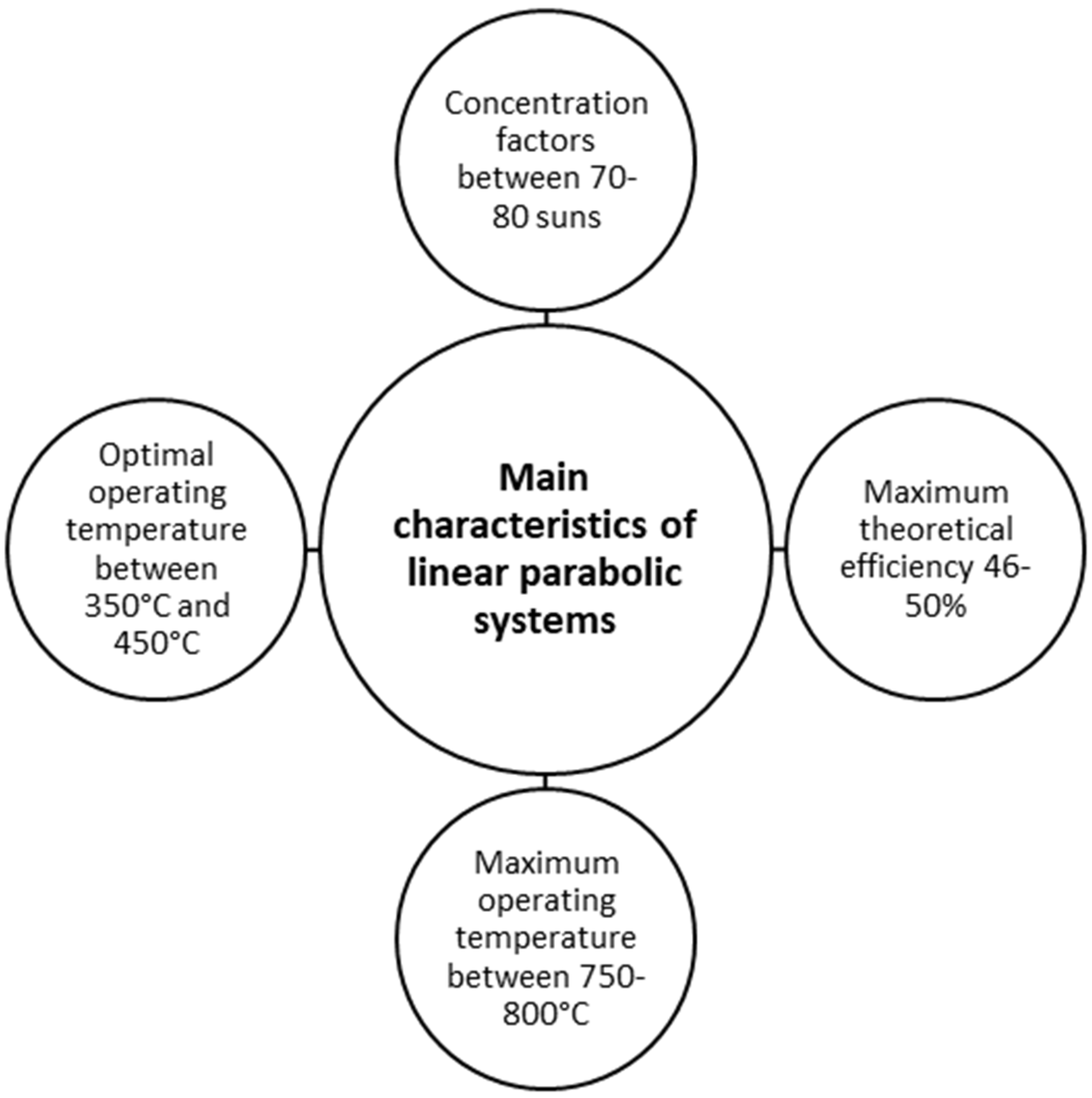
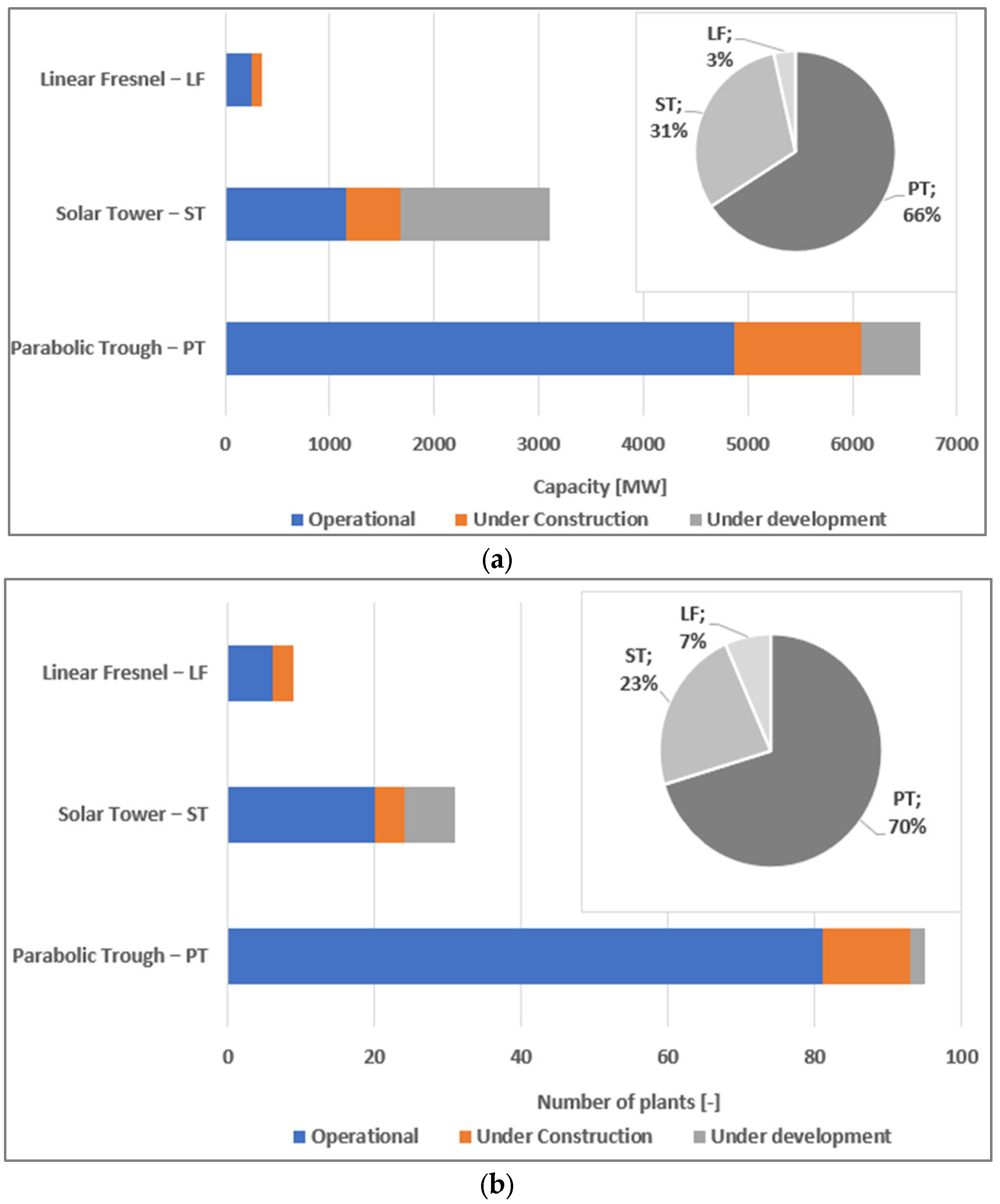
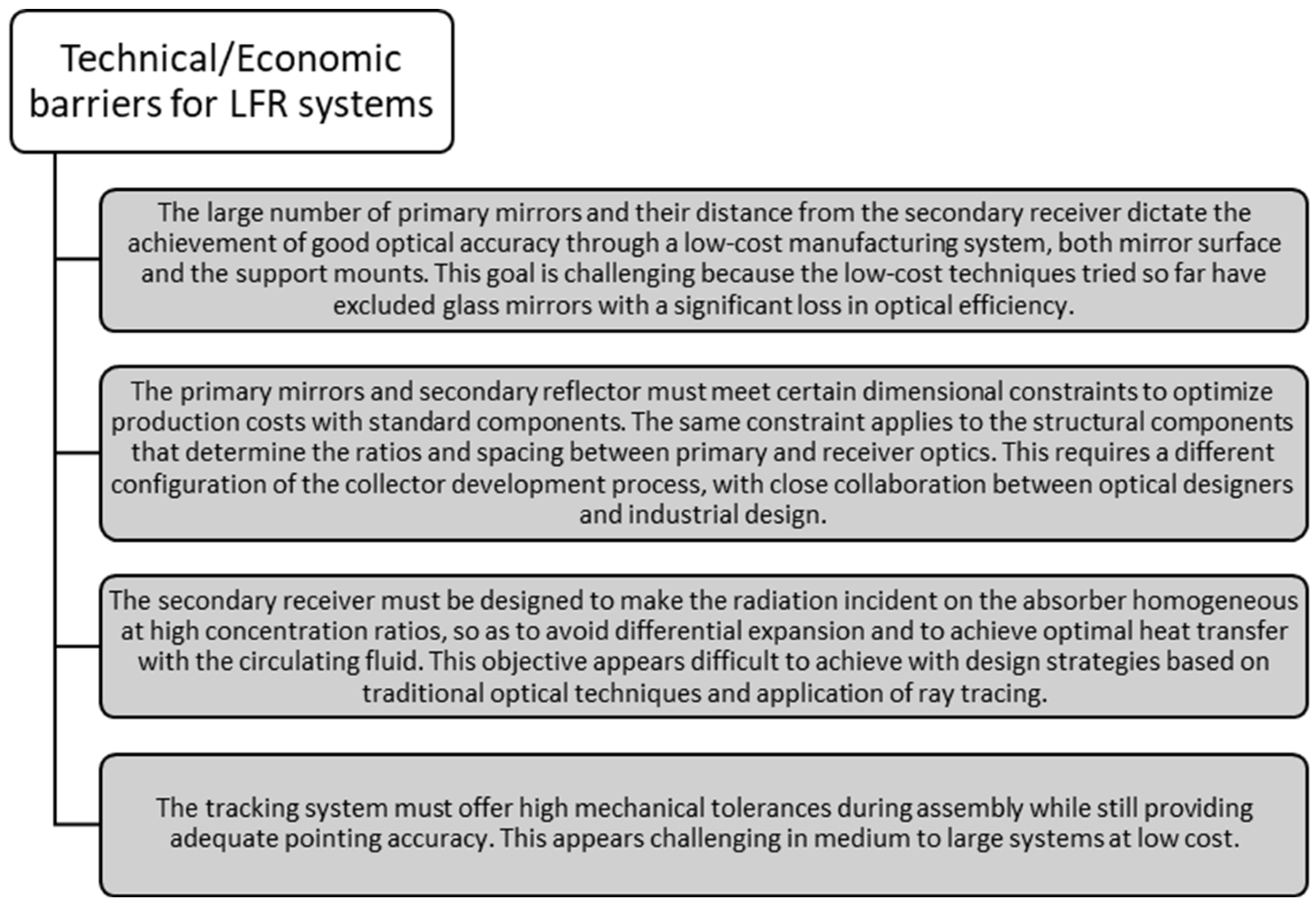
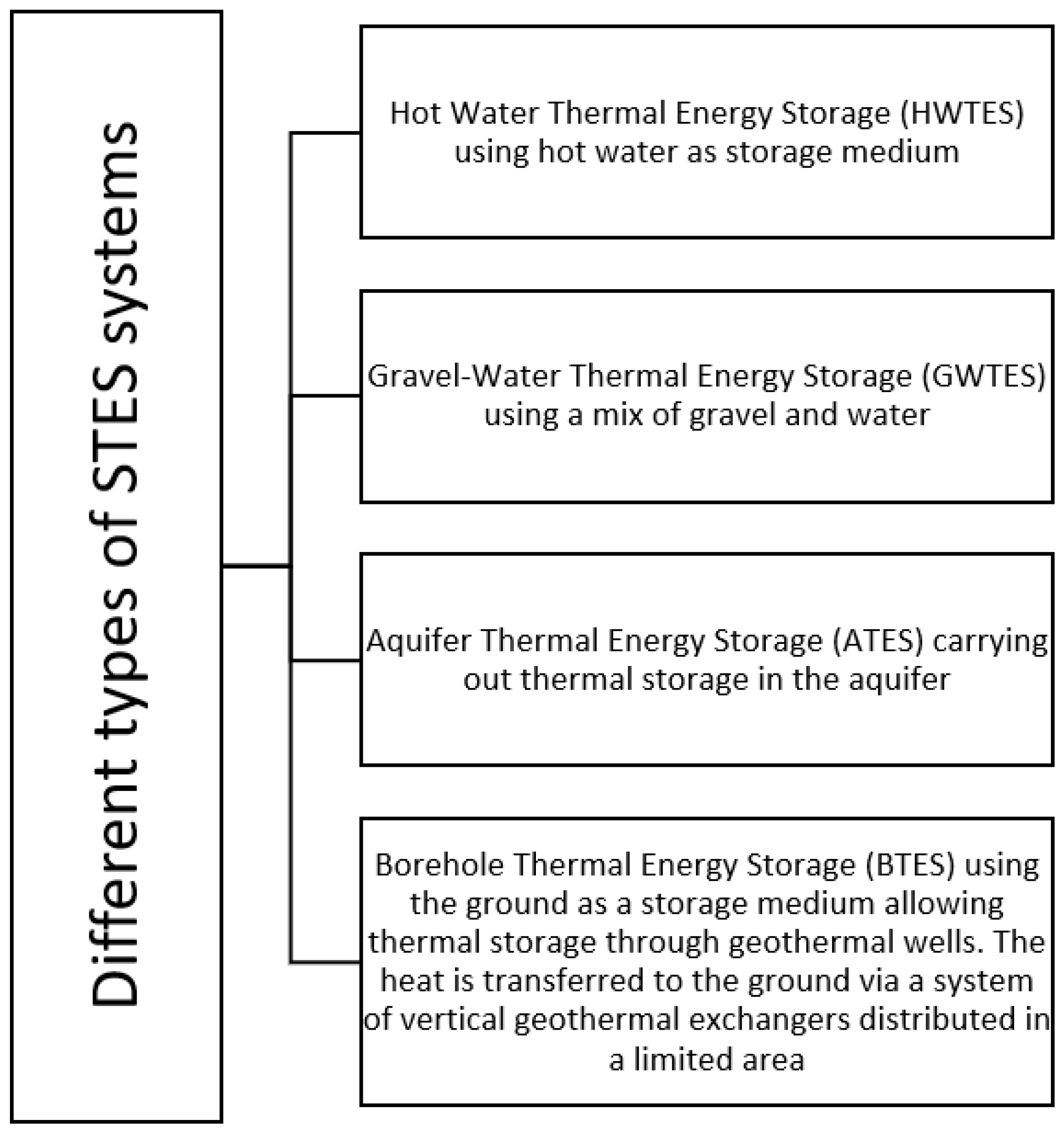
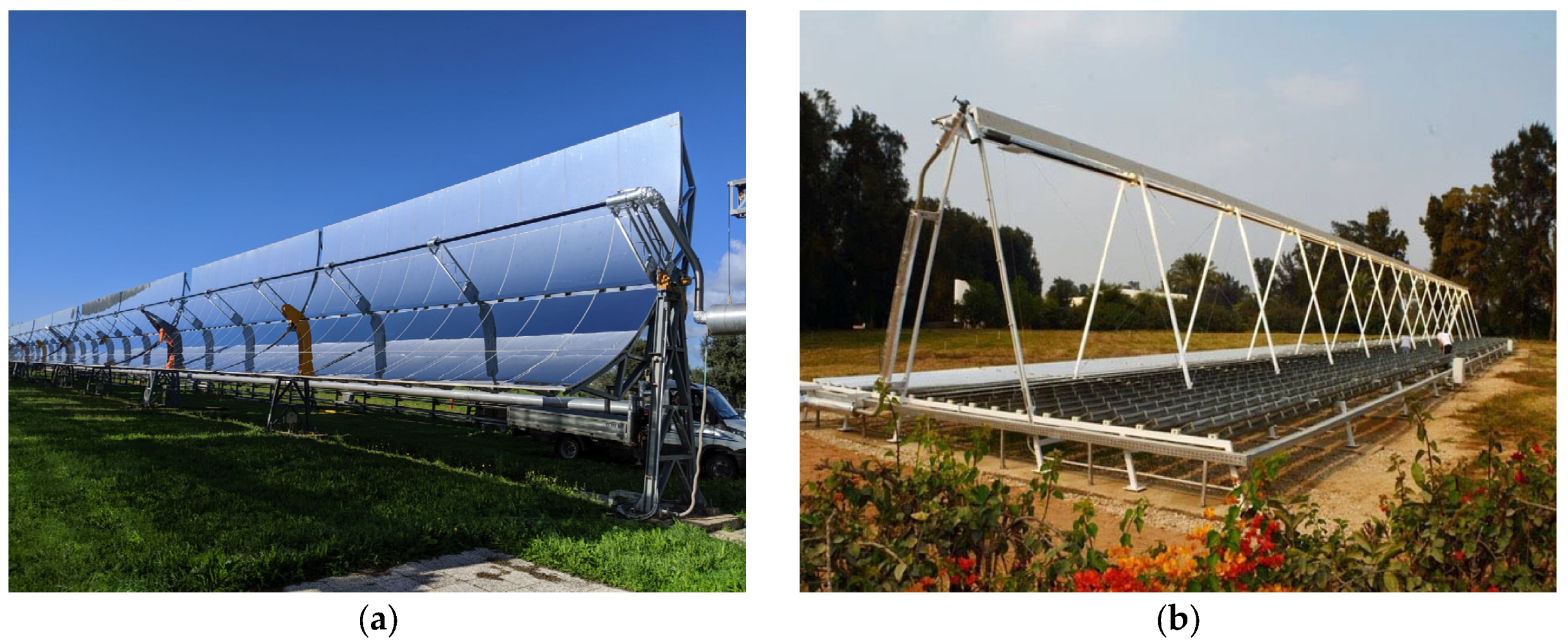

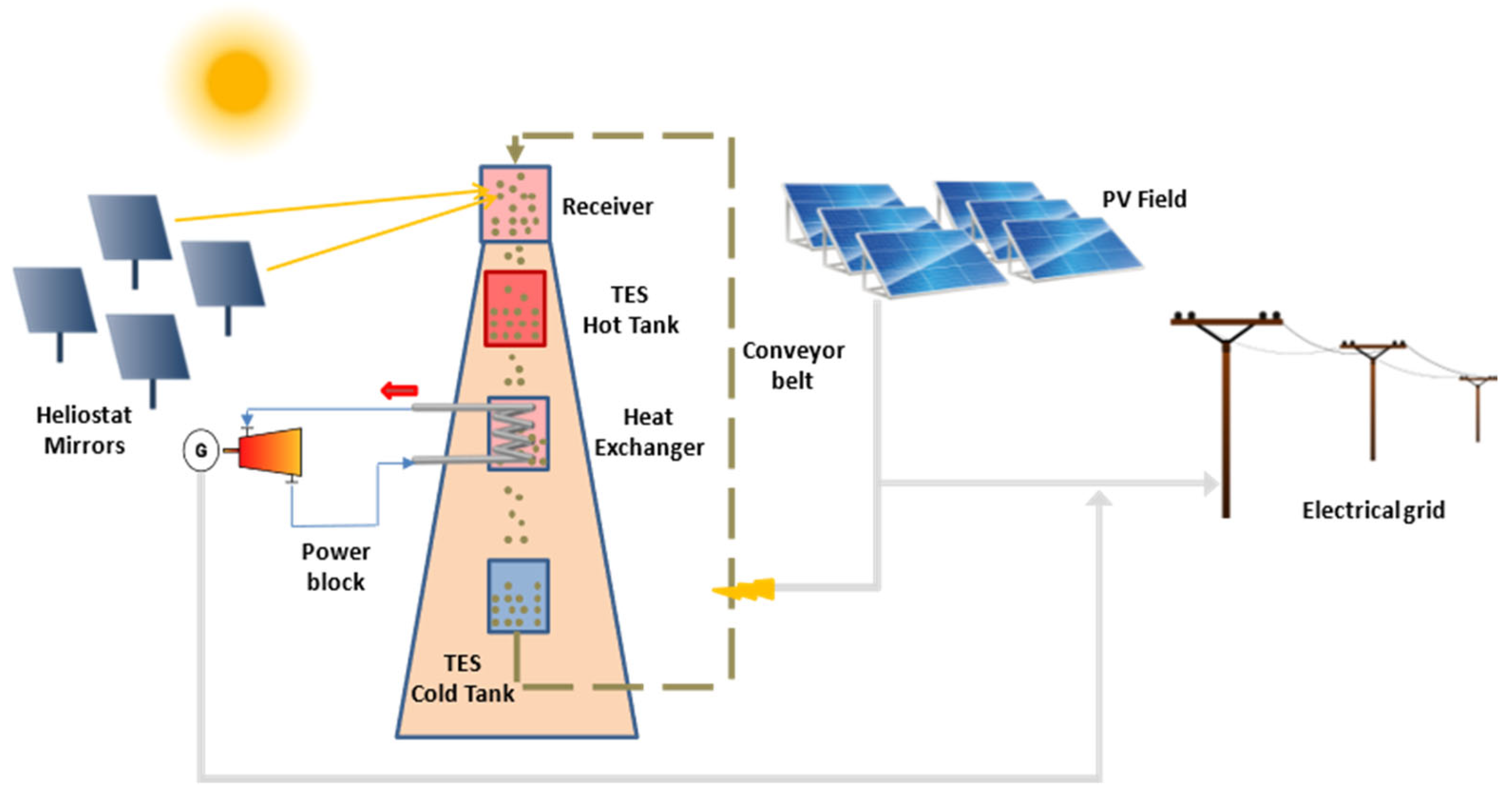
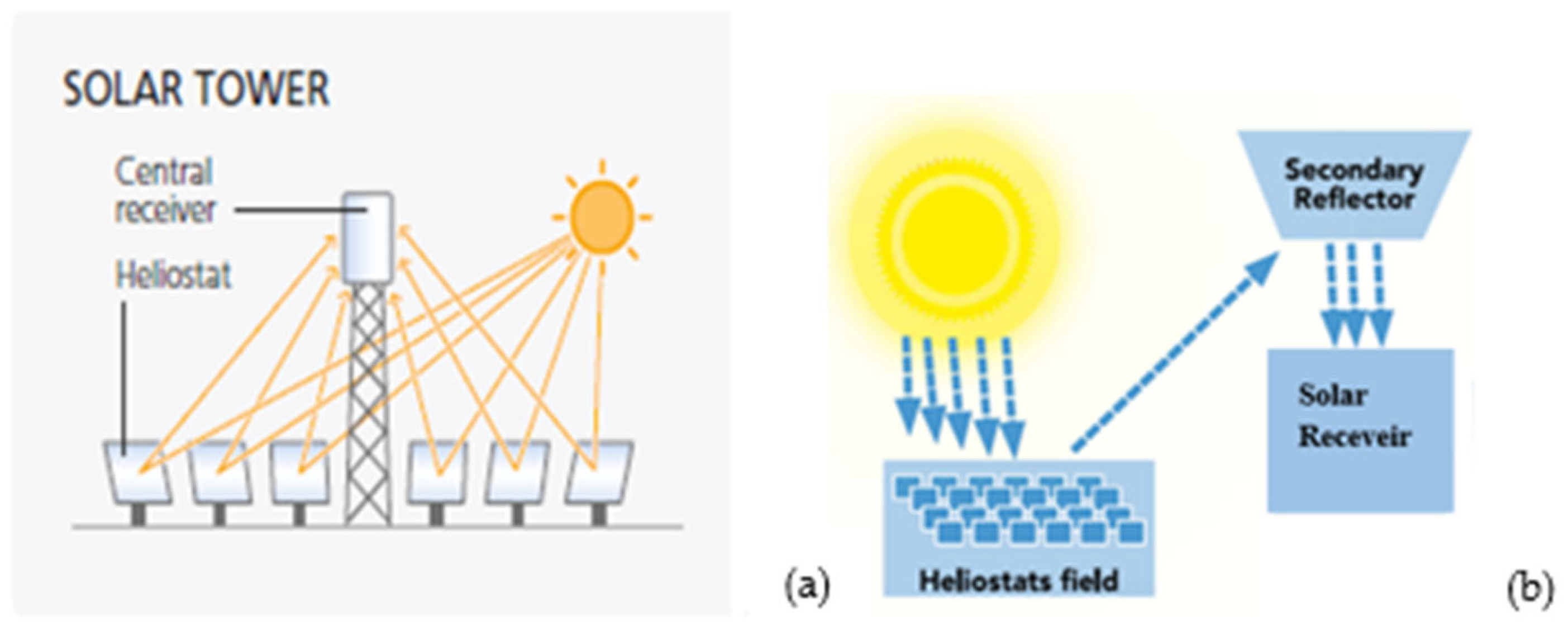
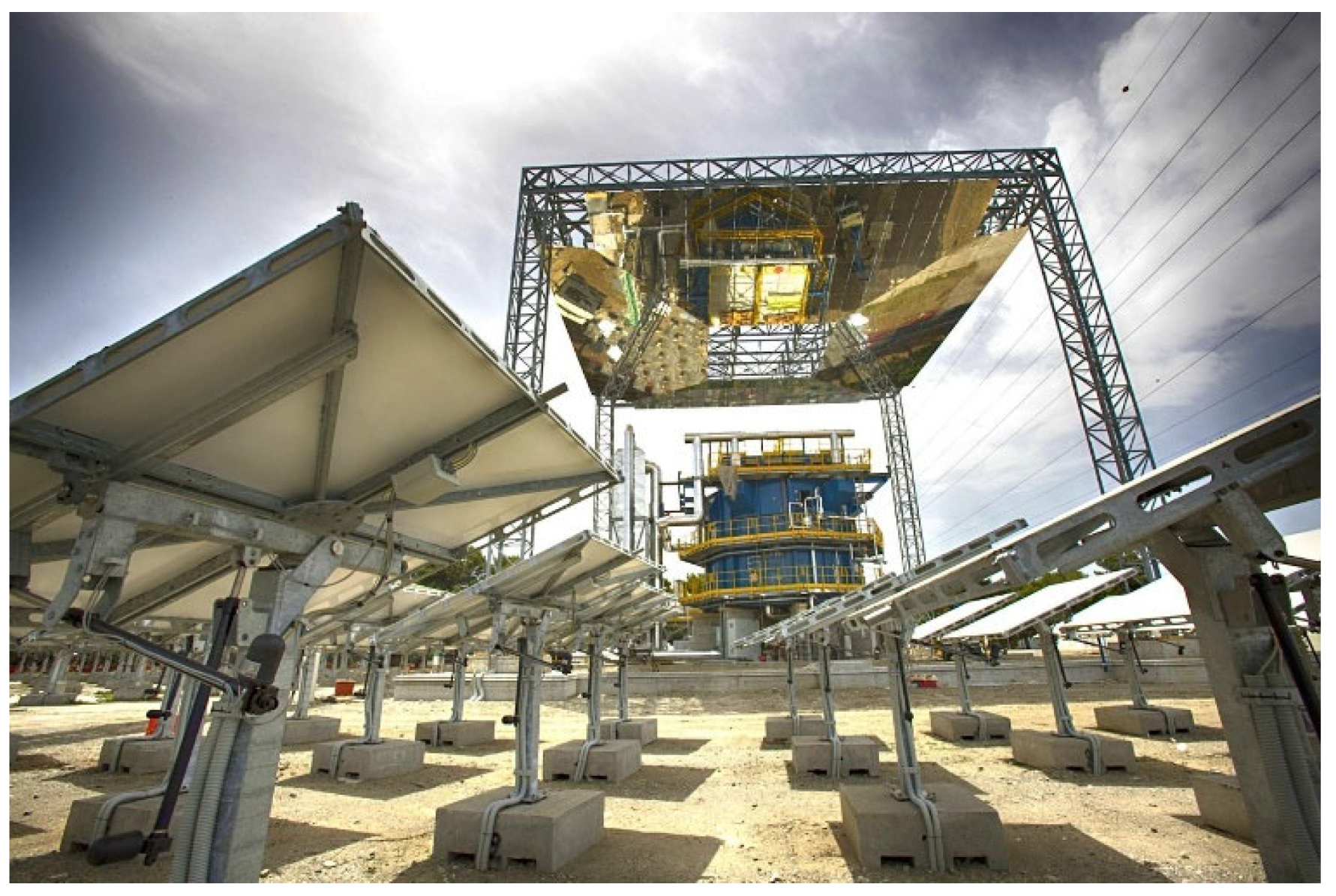


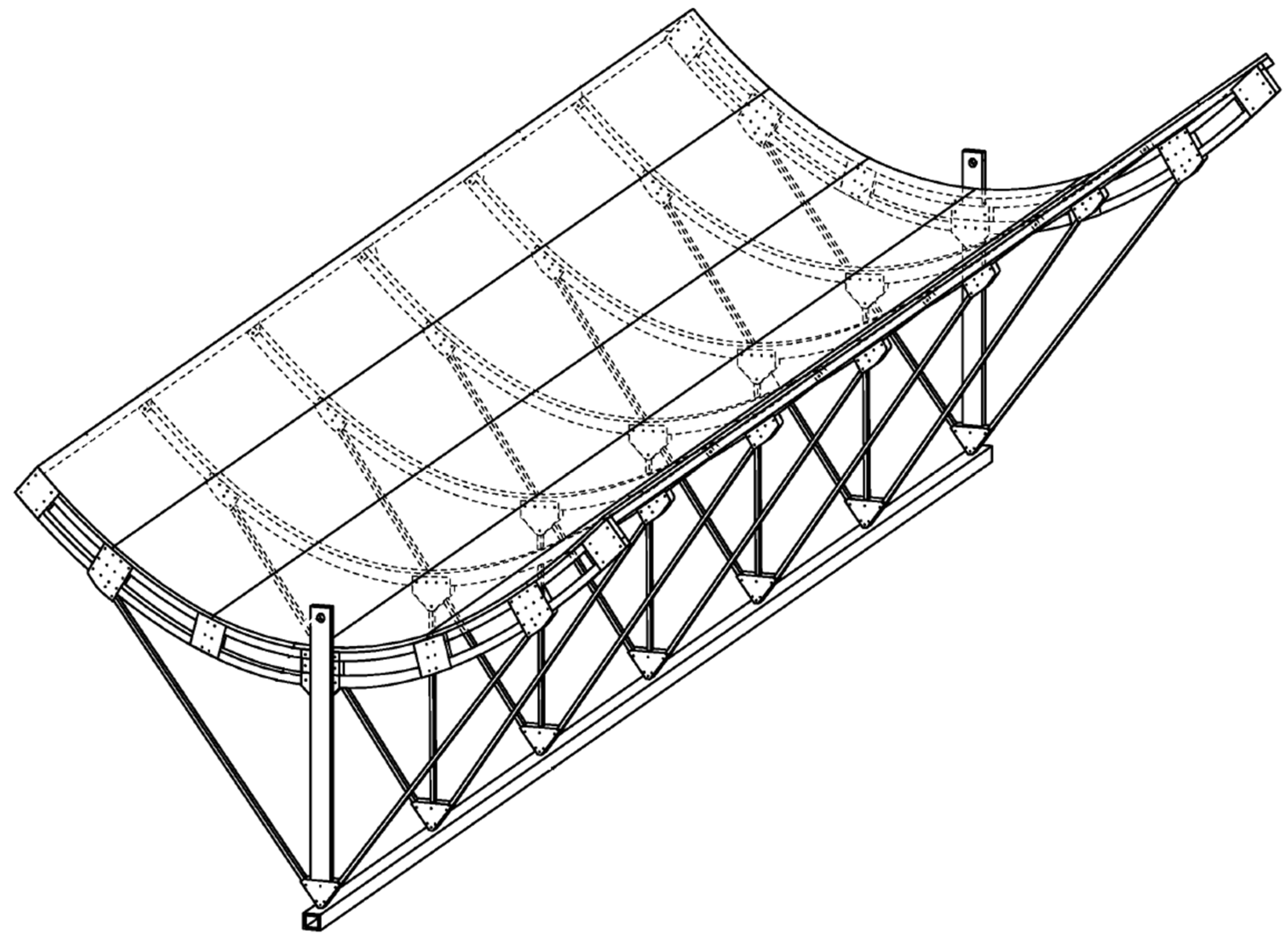
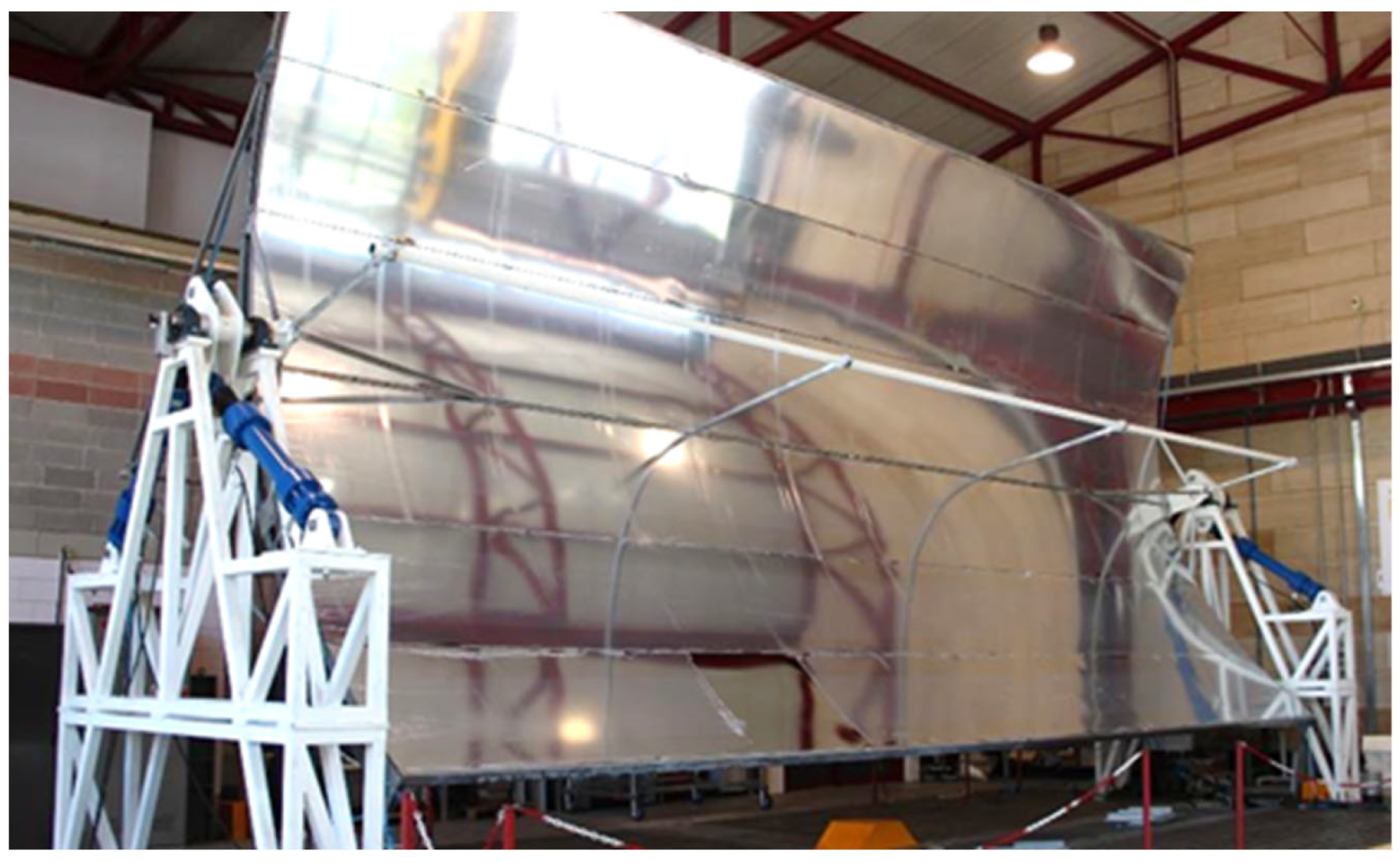
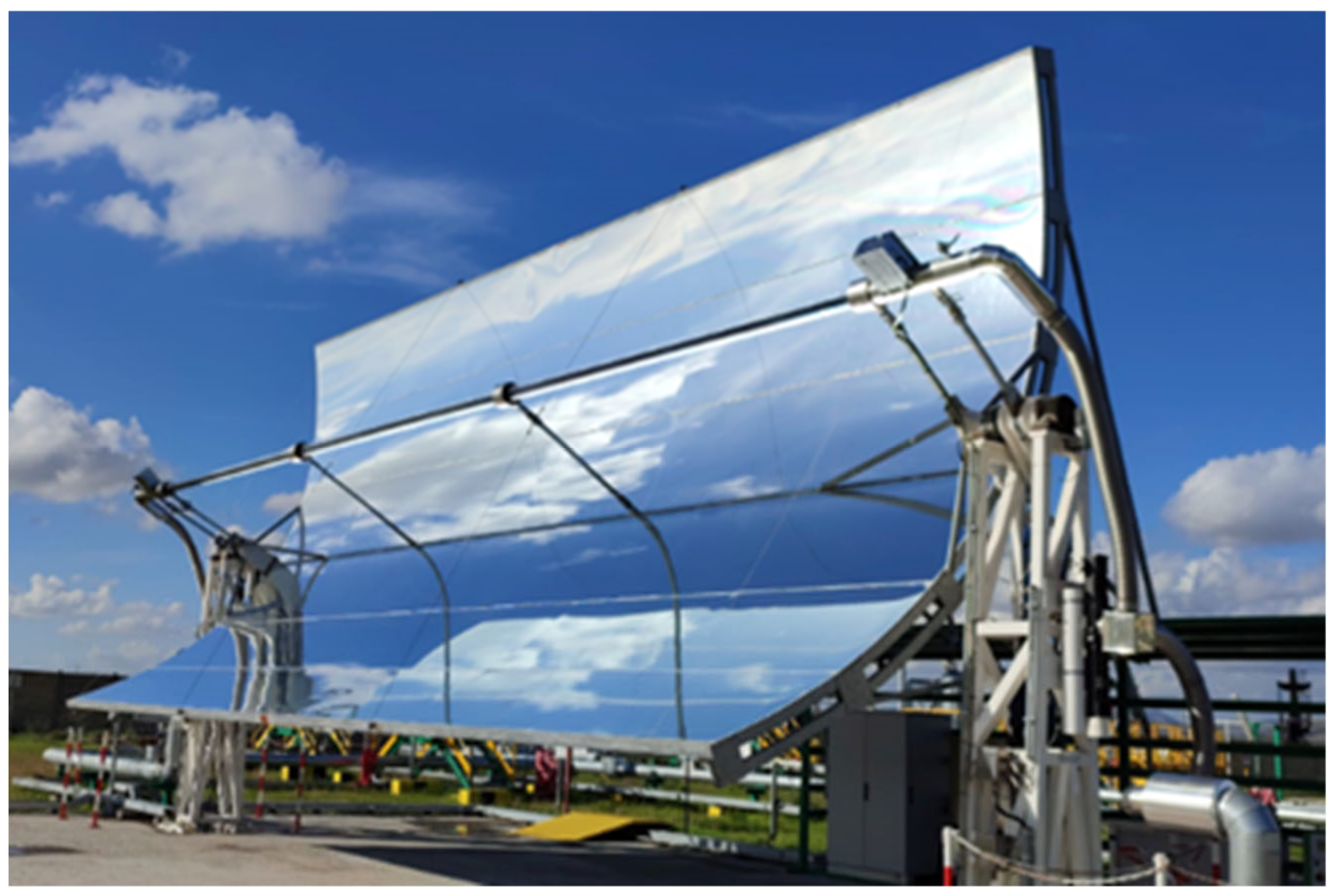
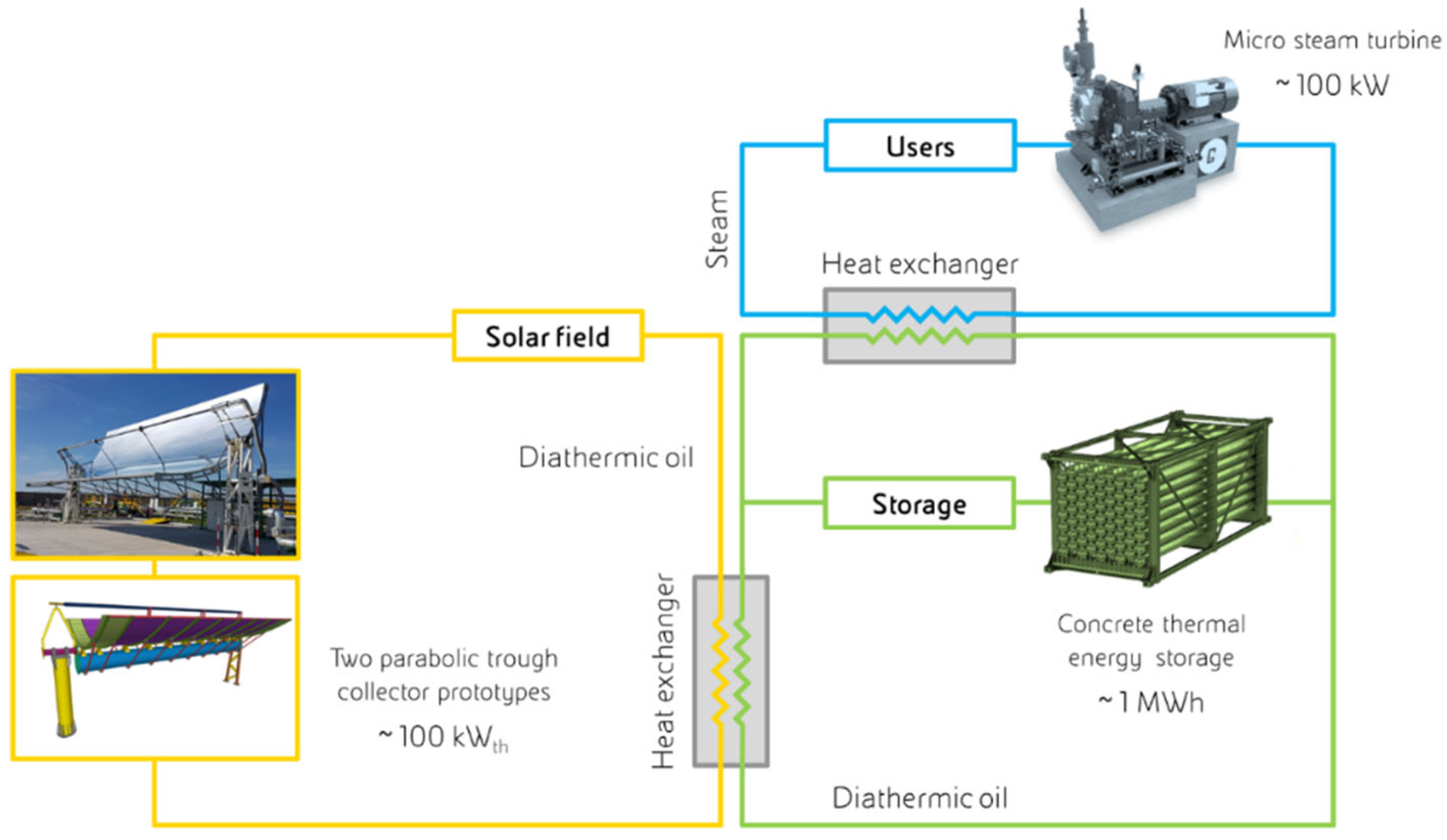
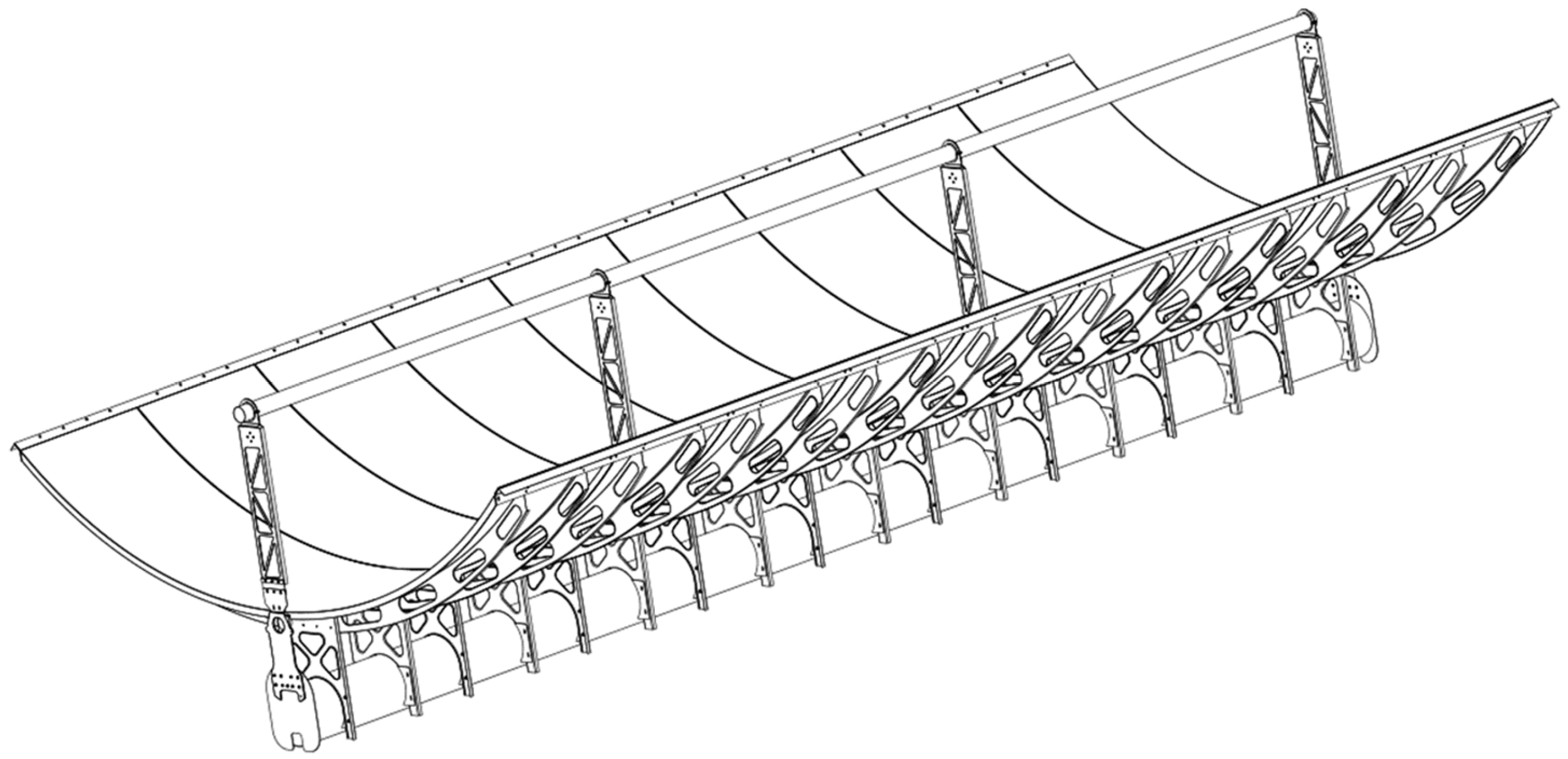

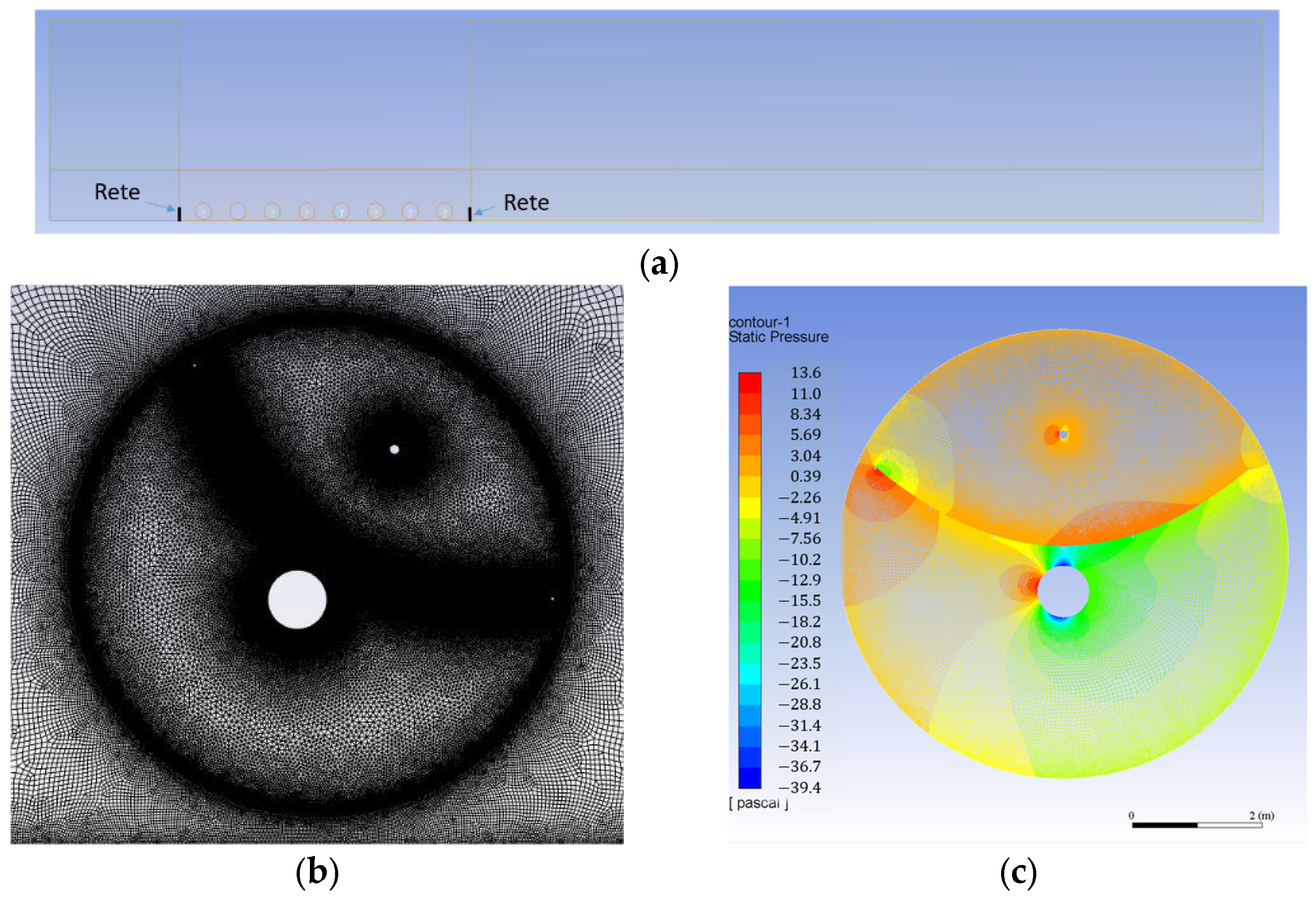
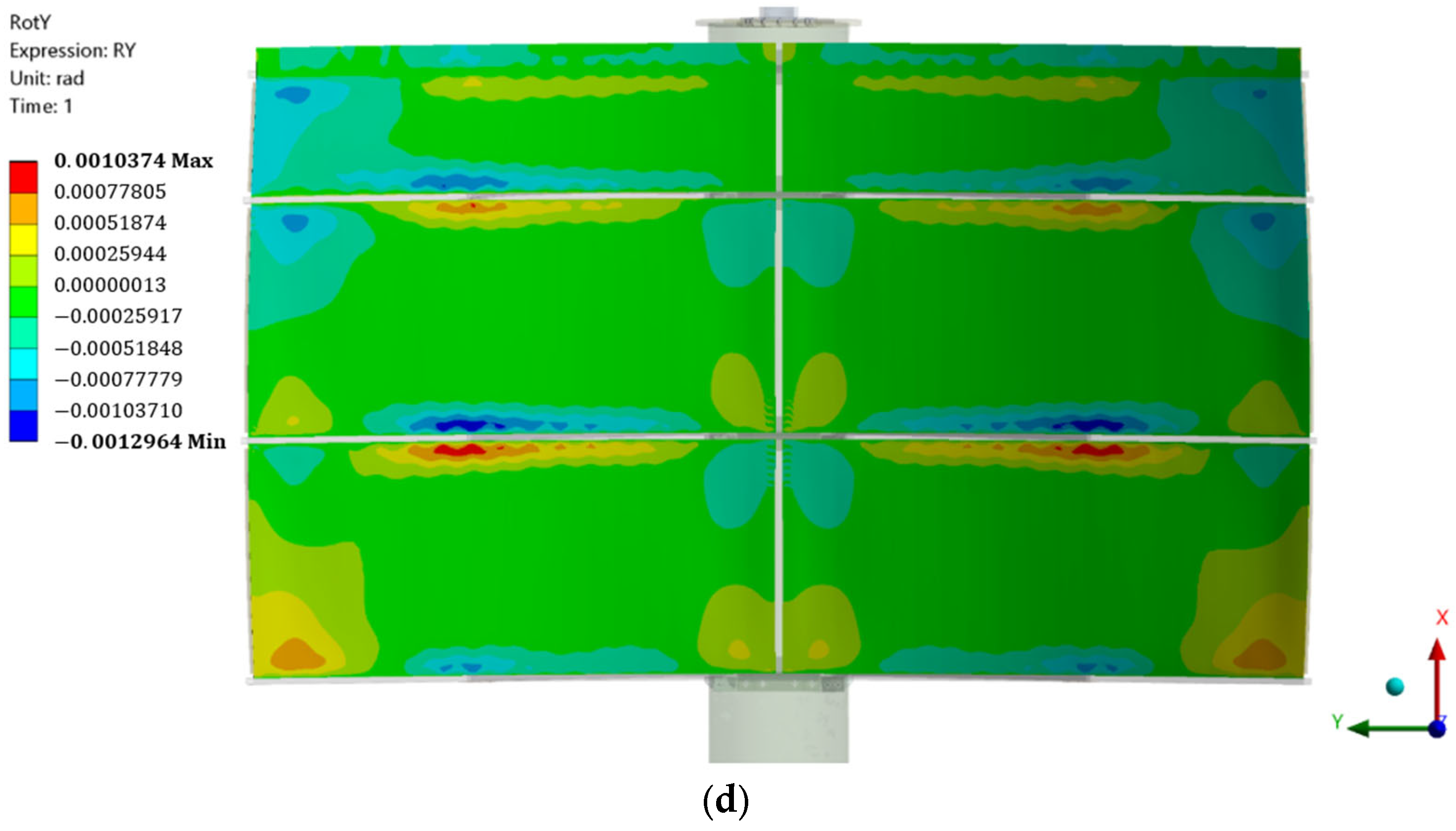
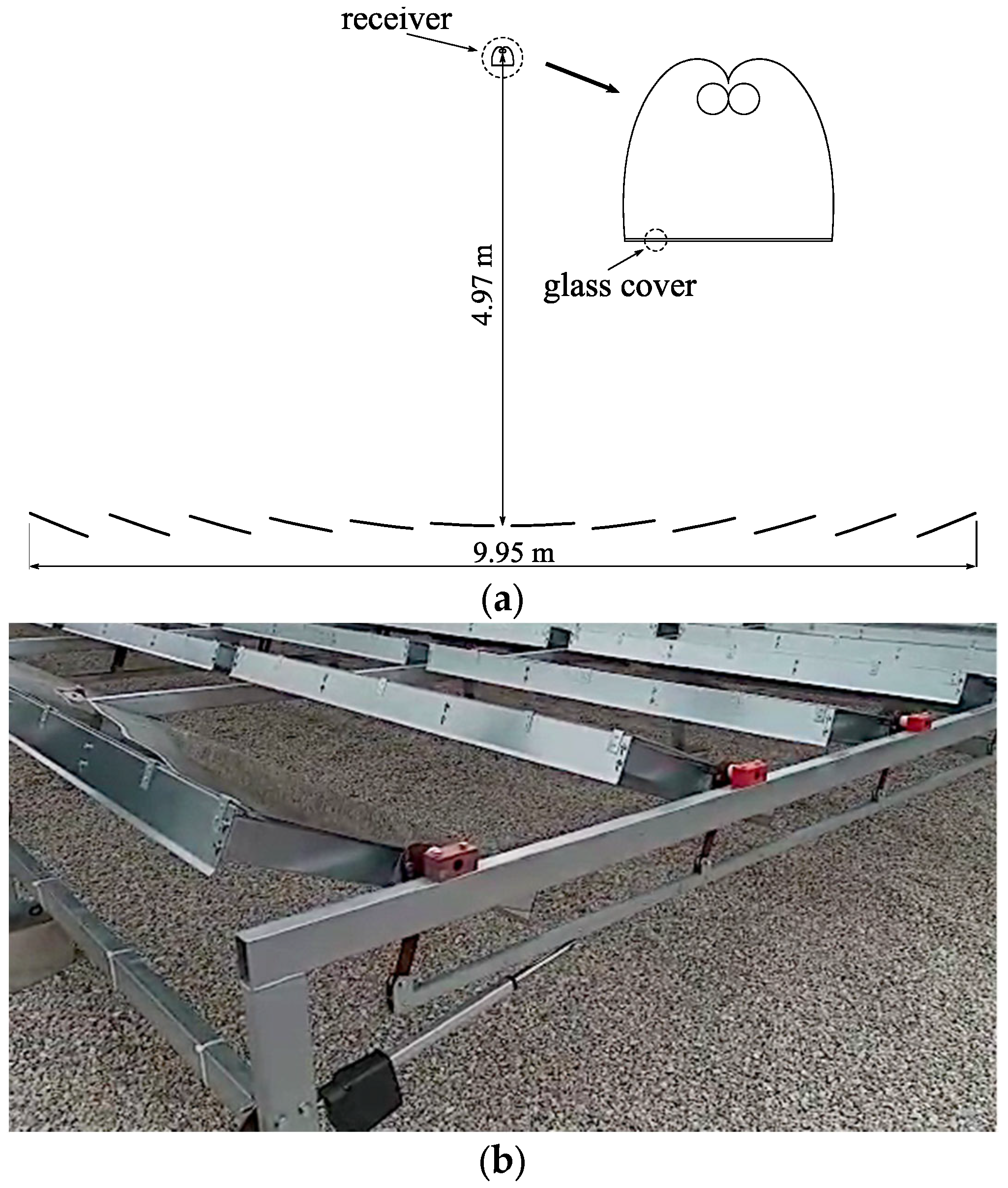
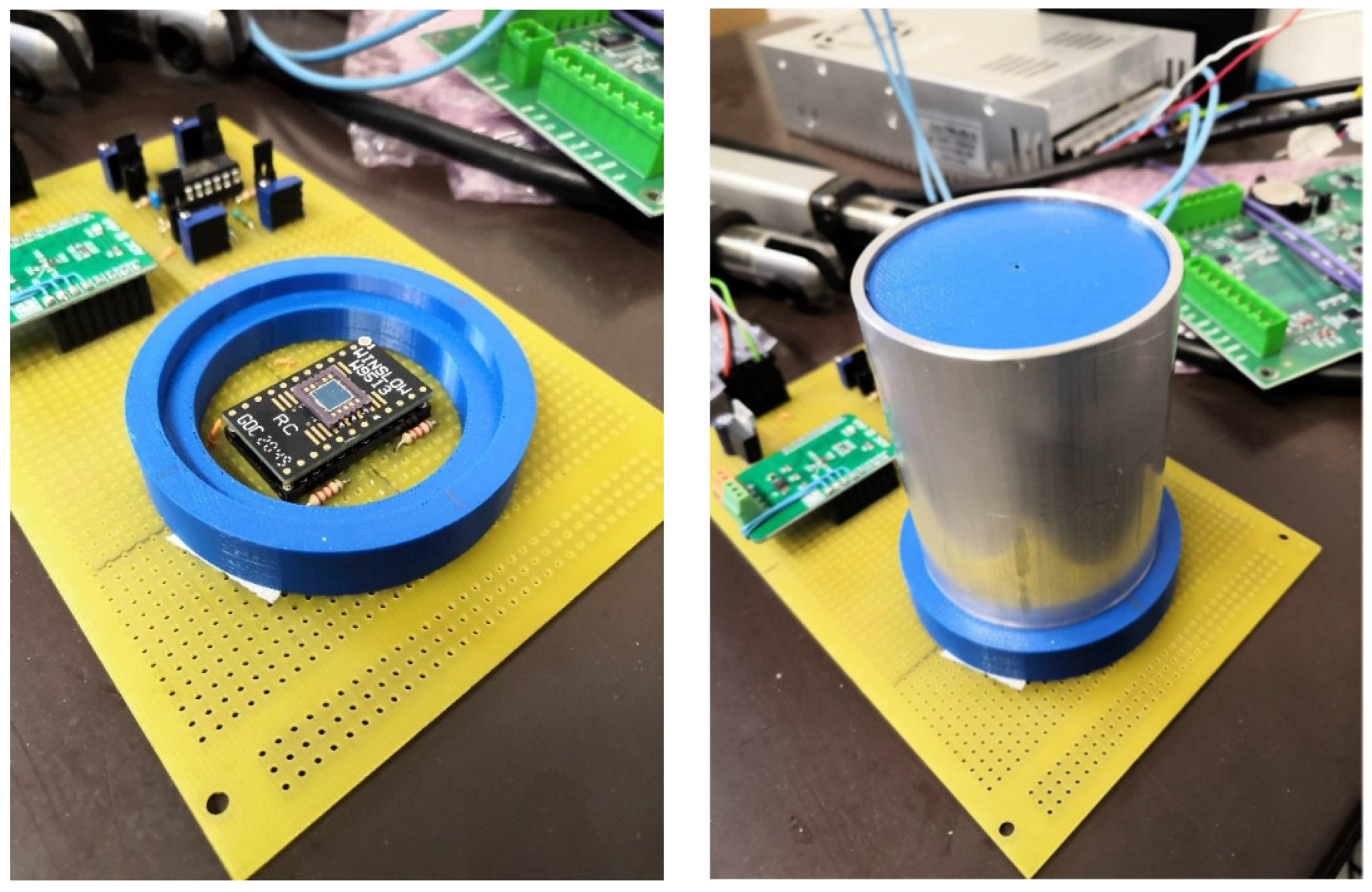
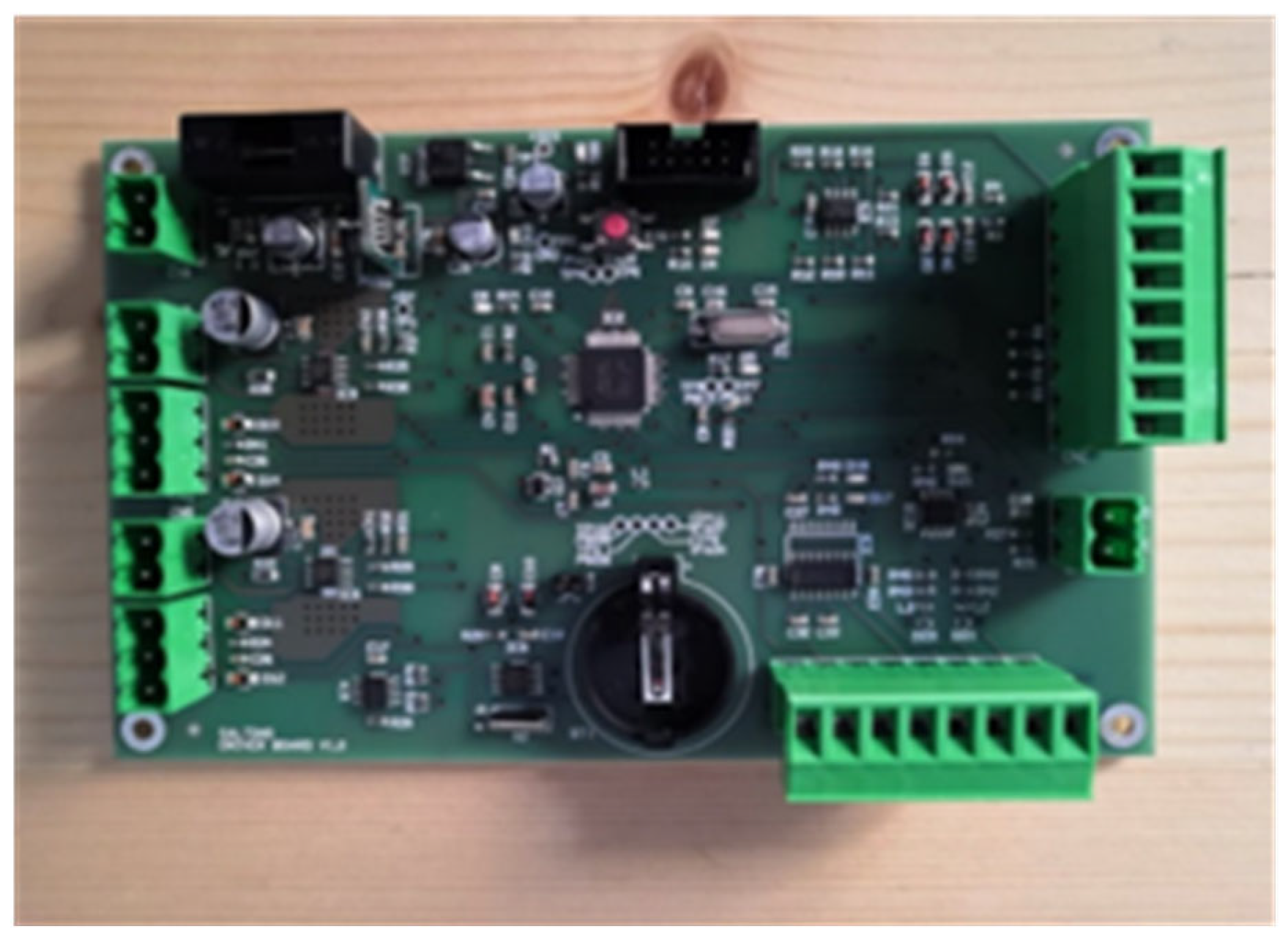
| Key R&D Actions | Expected Improvements for the PTC Technology |
|---|---|
| Thin, low-cost mirrors with high (95%) reflectivity and low focal deviation | Increase in efficiency by up to 3% |
| High-absorptance coating | Increase in efficiency by up to 4%. |
| Employment of alternative HTFs (e.g., molten salts, chlorite) | Increase in overall efficiency |
| New mirror supports (stamped steel, aluminum, composites) and foundations | Reduction of costs |
| Special coatings | Reduction of cleaning and washing needs |
| Innovative robotic systems and module layout | Reduction of cleaning costs and installation costs. |
| Technology | Linear Parabolic Systems | Linear Fresnel Reflectors | Dish-Stirling Systems | Solar Tower Systems |
|---|---|---|---|---|
| Capacity range [MW] | 10–250 | 5–250 | 0.01–1 | 10–100 |
| Capacity installed [MW] | 4800 (1200 under construction) | 20 (10 under construction) | Several prototypes | 1200 (300 under construction and 1300 under development) |
| Annual solar to electric efficiency (%) | 14–16 | 8–10 | 16–29 | 20–35 |
| Concentration ratio | 70–90 | 35–170 | <3000 | 200–1000 |
| Land use factor (%) | 25–40 | 60–80 | 20–25 | 20–25 |
| Development status | Commercially proven | Recently commercial | Prototype tests | Semi-commercial |
| Benefits | Proven reliability and durability. Simple design of optical systems that also guarantee acceptable concentration ratios. Possibility of assimilating commercial CSP systems to parabolic collectors that use oil as the HTF to other types of industrial plants, thus taking advantage of existing industrial supply chains | High concentration ratio. Simple structure. Direct steam generation proven | Highest concentration ratio. High modularity and high efficiency of the power cycle. Low level of land occupation. Wide range of applications. | Very high concentration ratio. High efficiency of power cycle and potential options for powering gas turbines and combined cycles |
| Drawbacks | Limited HTF temperature. | Lower optical efficiency as compared to other CSP technologies. Storage for direct steam generation is still in the R&D stage | Not commercially proven. High cost related to the complex design and components. Difficulty of integration with TES | High installation and maintenance costs |
| Technologies | Miyazaky (JPN) | Weizmann (ISR) | Masdar (UAE) | Magaldi (ITA) | Yumen (CHN) |
|---|---|---|---|---|---|
| Thermal Power | 113 kWth | 650 kWth | 100 kWth | 2 MWth | 17 MWth |
| KPI | LFR1832 | LFR1265U | Variation |
|---|---|---|---|
| Concentration ratio | 26 | 44 | +69% |
| Acceptance angle | 0.30° | 0.64° | +113% |
| Optical efficiency at normal incidence | 64% | 0.75% | +17% |
| Cost of primary optics | 280 Euro/m2 | 140 Euro/m2 | −50% |
| Cost of the receiver | 37 Euro/m2 | 20 Euro/m2 | −46% |
| Cost of the tracking system | 100 Euro/m2 | 70 Euro/m2 | −30% |
| Cost of the full collector | 417 Euro/m2 | 230 Euro/m2 | −45% |
Disclaimer/Publisher’s Note: The statements, opinions and data contained in all publications are solely those of the individual author(s) and contributor(s) and not of MDPI and/or the editor(s). MDPI and/or the editor(s) disclaim responsibility for any injury to people or property resulting from any ideas, methods, instructions or products referred to in the content. |
© 2024 by the authors. Licensee MDPI, Basel, Switzerland. This article is an open access article distributed under the terms and conditions of the Creative Commons Attribution (CC BY) license (https://creativecommons.org/licenses/by/4.0/).
Share and Cite
Palladino, V.; Di Somma, M.; Cancro, C.; Gaggioli, W.; De Lucia, M.; D’Auria, M.; Lanchi, M.; Bassetti, F.; Bevilacqua, C.; Cardamone, S.; et al. Innovative Industrial Solutions for Improving the Technical/Economic Competitiveness of Concentrated Solar Power. Energies 2024, 17, 360. https://doi.org/10.3390/en17020360
Palladino V, Di Somma M, Cancro C, Gaggioli W, De Lucia M, D’Auria M, Lanchi M, Bassetti F, Bevilacqua C, Cardamone S, et al. Innovative Industrial Solutions for Improving the Technical/Economic Competitiveness of Concentrated Solar Power. Energies. 2024; 17(2):360. https://doi.org/10.3390/en17020360
Chicago/Turabian StylePalladino, Valeria, Marialaura Di Somma, Carmine Cancro, Walter Gaggioli, Maurizio De Lucia, Marco D’Auria, Michela Lanchi, Fulvio Bassetti, Carla Bevilacqua, Stefano Cardamone, and et al. 2024. "Innovative Industrial Solutions for Improving the Technical/Economic Competitiveness of Concentrated Solar Power" Energies 17, no. 2: 360. https://doi.org/10.3390/en17020360
APA StylePalladino, V., Di Somma, M., Cancro, C., Gaggioli, W., De Lucia, M., D’Auria, M., Lanchi, M., Bassetti, F., Bevilacqua, C., Cardamone, S., Nana, F., Montagnino, F. M., & Graditi, G. (2024). Innovative Industrial Solutions for Improving the Technical/Economic Competitiveness of Concentrated Solar Power. Energies, 17(2), 360. https://doi.org/10.3390/en17020360












